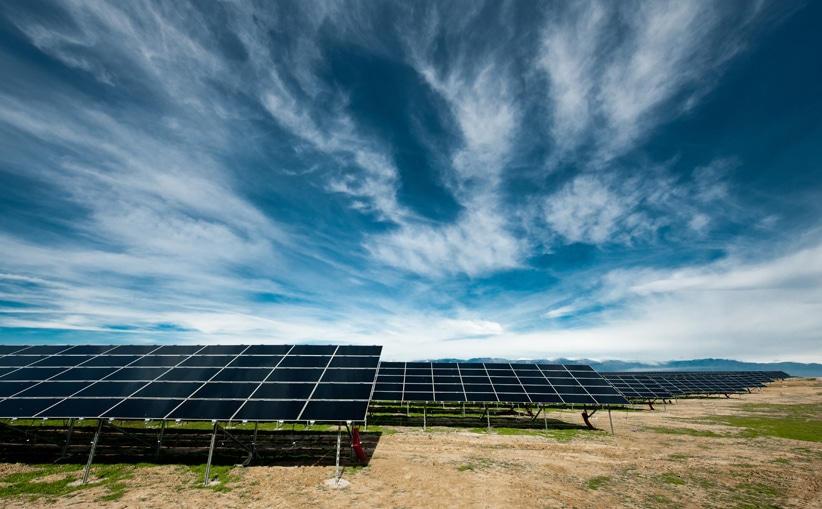To that end, governments and private investors have poured money into the research and development of large-scale solar projects, with many adopting a tendering process for the procurement of suitable solar industry service suppliers.
Here are some practical tips and strategies to make your bid stand out.
Understanding the clients’ goals
It is important to understand the goals of the company whose work you are bidding for. Doing research to recognise their financial, environmental, and quality concerns, as well as their brand, vision, and other goals is vital when producing a winning solar energy proposal.
By making sure you not only meet the requirements specified in the Request for Proposal (RFP), but also the values and concerns shared internally by your potential client, you give them a sense you are the right service provider for them.
Demonstrate your technology and equipment
One aspect of tendering for solar projects that is regularly overlooked, or undervalued, is a thorough, detailed description of all the equipment and technology your company uses. PV cells use varying technologies.
Elaborate on which technologies you use. For example, explain whether you use crystalline silicon-based, thin-film solar cells, or a hybrid version — detailing the method with which they are constructed. Elaborate further on the benefit of said technologies as well as the brand, or brands you deal with.
Detailing these specifications in your proposal will give the client certainty you are using high quality equipment and technology, and not low cost, poor quality solar panels that will fail and cause losses in money, time, and energy.
Proving your experience and qualifications
Solar industry clients want a partner who is committed for the long-term. Include in your proposal information about your company’s history, experience, and qualifications in completing renewable energy projects. Including the total number of megawatts installed, projects completed, and how many years your company has been operating.
Detail which specific areas of the project your company will complete, and which parts will be handled by partners you work with, or factories you have contracts with to provide services. Provide details on how you conduct due diligence on your partners to ensure they share your commitment to quality, values and the environment.
Having all your services and experience listed, as well as the contractors you use, can make your proposal more attractive and it relieves the workload on the client to procure a broad range of services. Lastly, provide profiles of your board and management, so they know who’s who and what experience you have. Providing evidence of company certificates, licenses, insurance, and any other affiliation you may have with industry bodies is often a requirement, and it is best to include these even if they haven’t been requested
Demonstrate your commitment to maintenance
Displaying dedication to maintaining your solar systems will give your desired client confidence in your abilities and long-term commitment. Solar farms are often located in harsh, desert locations, with high temperatures and dusty conditions.
While high-quality solar equipment is reliable, it is important under such conditions to constantly clean and maintain all components of the farm, ensuring the entire system runs smoothly for the projects lifespan. Once again, disclose whether your company completes the maintenance, or whether you use a contractor.
Incorporating graphics and infographics
High-quality graphics and infographics are becoming more prevalent in proposals, particularly ones involving specific data or technical information. Ensuring they have meaning is crucial.
When incorporating images of your services into a proposal, utilise a call out box and elaborate on where you added real value. Evidence your performance claims with facts and figures — display data from a previous solar project you provided a service to, or a problem you solved. For example, demonstrating the number of kilowatt-hours compared to watts installed is an effective way of showing how much energy they are saving by running a project on solar energy.
Adopt a positive writing style
Finally, once you have completed all your research it is time to put it into writing. Like your team, the client will have a team of highly experienced solar, civil, and electrical engineers, as well as procurement and renewable energy management professionals. Submitting a proposal with high-quality marketing, full of technical terms and data won’t be enough to persuade professional and experienced reviewers. Neither will they want to read about the services you will deliver without a detailed and specific plan of how you’ll achieve it.
Your bid needs to be written in a concise manner, one tailored to the specific project and backed up with evidence.
–
Author: Jason Cooney is the Director of The Tender Team, a bid and tender writing consultancy based in Sydney.
The views and opinions expressed in this article are the author’s own, and do not necessarily reflect those held by pv magazine.
This content is protected by copyright and may not be reused. If you want to cooperate with us and would like to reuse some of our content, please contact: editors@pv-magazine.com.








By submitting this form you agree to pv magazine using your data for the purposes of publishing your comment.
Your personal data will only be disclosed or otherwise transmitted to third parties for the purposes of spam filtering or if this is necessary for technical maintenance of the website. Any other transfer to third parties will not take place unless this is justified on the basis of applicable data protection regulations or if pv magazine is legally obliged to do so.
You may revoke this consent at any time with effect for the future, in which case your personal data will be deleted immediately. Otherwise, your data will be deleted if pv magazine has processed your request or the purpose of data storage is fulfilled.
Further information on data privacy can be found in our Data Protection Policy.